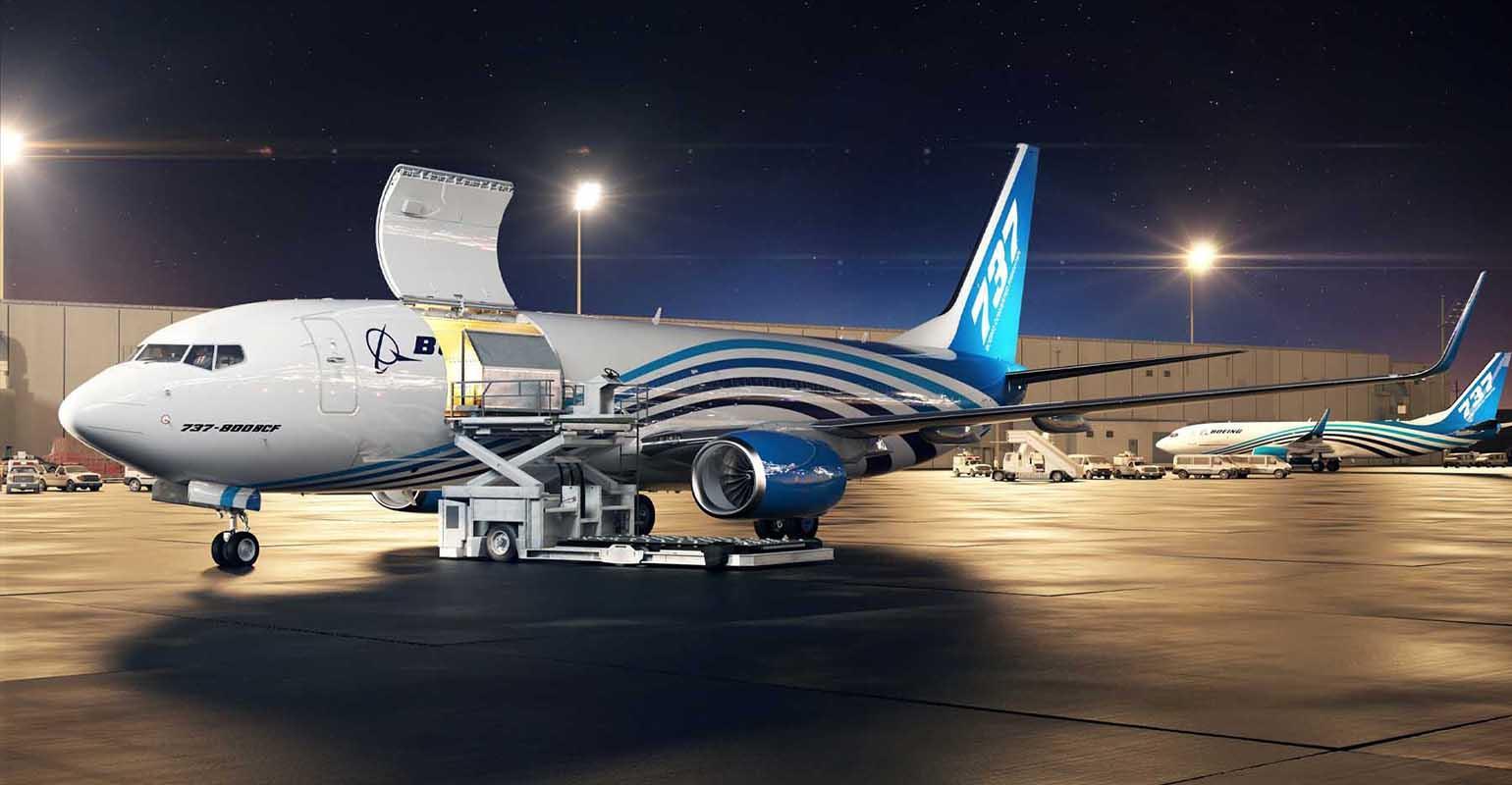
For the first time since the COVID pandemic hit populations, economies and aviation, global air cargo demand has actually returned to pre-COVID levels. According to IATA, January 2021 demand in tonne-kilometers exceeded January 2019 demand by more than 1%. So it’s no longer just missing belly freight that is driving cargo markets.
“These are very exciting times,” summarizes Jens Steinhagen, director of Boeing Freighter Conversions (BFC) in the OEM’s services unit. Steinhagen agrees with the general view that booming e-commerce and express cargo carriage, caused by COVID, are driving cargo and freighter demand now.
In fact, Boeing’s latest forecast of cargo demand, which foresees the need for more than 3,000 freighters in 20 years of which half will be converted from passenger models, was delayed until October 2020 so that the specific effects of COVID could be recognized.
“We are fully embracing the surge,” Steinhagen says. “And we are increasing our conversion capacity.” That means increasing both the MROs that do Boeing conversions and the lines at existing MROs.
Conversions of Boeing passenger aircraft can be done in three ways. Boeing can manage the conversion under contract with its own chosen suppliers. Or a shop licensed by Boeing can do the conversion working directly with the customer. Finally, a shop with its own conversion type certificate can do the modification.
IBA head analyst for commercial and aging aircraft Jonathan McDonald points out that the first two methods generally cost a bit more than the independent approach. But Steinhagen agues there are offsetting advantages.
The big advantage to the first approach is that the customer gets a Boeing program manager who works closely with the chosen MRO and can help get any other maintenance work done, plus the conversion, all on time. Under the second, licensed approach, Boeing supplies the technical data to the licensee.
Under the third-party approach, neither of these benefits are available. Due to the long history of converting Boeing aircraft and BFC’s important role in this business, Steinhagen’s unit is the leader in the conversion market, although its dominance depends on model. The OEM currently focuses on converting 737-800s and 767-300ERs, letting licensees have the 757 and third parties do 737 classic mods.
But the Boeing targets are the hottest conversion opportunities. For example, BFC has 150 737-800 conversions on order. The OEM has three MROs doing these modifications now and continues to add to them.
For the 767-300, Singapore Technology Engineering expects to add lines, and BFC will add MROs. Overall, ST Engineering did ten conversions in 2020, and expects to do 30 conversion in 2021, according to a spokesperson.
767 conversions must compete with Airbus A330-200 and - 300 conversions, but Steinhagen is confident Boeing will continue to dominate this capacity segment. “The 767 is the right size, more efficient and smaller on the ramp,” he argues. “I don’t see any changes.”
But IBA’s McDonald says the A330s are starting to build some momentum as feedstock is becoming attractive for conversion. He sees this momentum building in both A330 conversions and orders, though both are still far short of 767 totals.
The Boeing exec also sees the 737-800 as having higher reliability, lower fuel consumption and lower operating costs than the A321 as a narrowbody candidate for conversion. But the A321-200 also competes with the 757-200 for conversion. “The 757-200 is still dominant,” McDonald says. But he sees “an eventual shift to the A321.”
For each program, BFC starts with a baseline conversion design, which it can then customize for each client. For example, the current 767 baseline is designed for express carriers, because these have been such important customers. But BFC can upgrade the landing gear for an operator that wants to carry heavier loads for general freight duties.
On the possibility of a Boeing 777 conversion, Steinhagen says only that the OEM “has been studying it for a while.” IAI and GE are collaborating on a 777 cargo conversion, made much more attractive by lower feedstock prices across the market, but especially for widebodies.
Steinhagen acknowledges the importance of low feedstock prices, which do not seem likely to go away soon. For example, 60 more 737-800s are due to come off lease this June.
The BFC exec says his conversion options do not really compete with Boeing’s production freighters. Each operator tends to have needs that fit a production freighter best, or a converted freighter best, but not both. “Utilization is a big driver.”
Focusing on the hottest types seems to be working. LATAM recently announces the conversion of up to eight 767-300ERs into freighters from 2021 through 2023. And ASL Aviation Holdings will be using its 10 options for 737-800 conversions.
There should be plenty more similar orders to come. McDonald calls the 737-800 converted freighter “a highly desirable asset,” saying “more feedstock should bring down prices.” And as for the 767-300, it is “still the go-to medium capacity widebody.”





